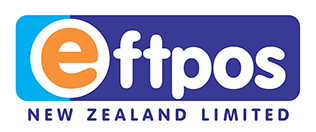From 1 December 2025, the fees you pay to process Visa and Mastercard credit and contactless cards will reduce. The Commerce Commission is capping the maximum “interchange” fees that banks can charge. Read on to find out what interchange fees are, what is changing, and how it might affect your costs.

What Is An Interchange Fee?
When a customer pays with a credit or contactless debit card, you pay a Merchant Service Fee (MSF) to your merchant services provider (usually your business bank).
A typical MSF includes four parts: Interchange Fees, Scheme Fees, Network Fees, and Acquirer Fees. Interchange fees are the largest component of your Merchant Service Fees.
Interchange fees are an amount your bank (the 'acquirer') pays to your customer’s bank (the 'issuer'). It’s set by the card schemes, i.e. Visa and Mastercard — not by your bank. It's essentially a reward or reimbursement for the customer’s bank for issuing the card used in the transaction.
When You Do (and Don’t) Pay a Fee
Not every transaction attracts Merchant Service Fees (and therefore interchange fees). It depends on the card type and how the payment is made (inserted, tapped, or swiped):
| Payment type | Example | Fees | Why |
|---|---|---|---|
| EFTPOS magstripe & Visa/Mastercard debit (insert or swipe + PIN) | Customer selects Cheque or Savings | ❌ | No MSF applies. |
| Contactless debit (tap/PayWave) | Customer taps a debit card or smart device (Apple Pay, Google Pay, etc.) | ✅ | Treated as a scheme transaction; interchange and scheme fees apply. |
| Credit card (tap, insert, swipe) | Visa or Mastercard credit | ✅ | Higher interchange applies, especially for premium or rewards cards. |
| Online or phone payments | eCommerce checkout or manual entry | ✅ | Includes network and security costs (card-not-present risk). |
| Digital wallet payments | Apple Pay, Google Pay, Samsung Pay | ✅ | Routed through Visa/Mastercard’s network, so scheme and interchange apply. |
What’s Changing From December 2025
New Zealand first capped interchange fees in 2022. It helped, but businesses here still pay more in Interchange fees than in other countries. From 1 December 2025, the Commerce Commission will drop those caps further for NZ-issued cards, and then from 1 May 2026, new limits will apply to foreign-issued cards as well.
| Type of transaction | Current cap | New cap | When it takes effect |
|---|---|---|---|
| NZ personal credit (in-person) | ~0.8 % | 0.3 % | 1 Dec 2025 |
| NZ personal credit (online) | ~0.8 % | 0.7 % | 1 Dec 2025 |
| NZ debit (contactless) | ~0.2 % or 5 c | No change | — |
| NZ debit (eftpos + PIN) | 0 % | No change (still 0 %) | — |
| Foreign cards (in-person) | Uncapped | ~0.7 % credit / 0.6 % debit | 1 May 2026 |
| Foreign cards (online) | Uncapped | ~1.5 % credit / 1.4 % debit | 1 May 2026 |
Interchange fees for commercial (business) credit cards (both domestic and foreign-issued) will stay uncapped for now. The Commerce Commission has said these fees appear high and will keep an eye on them. Domestic prepaid cards are also staying uncapped for the time being. This gives newer payment providers and fintechs space to innovate as they build their customer base.
In short:
-
In-person credit card fees will drop the most
-
Debit and EFTPOS stay the same (already low or free)
-
Foreign cards will now have capped rates too
- Interchange for Commercial (business) credit cards and prepaid cards remains uncapped
How It Might Affect Your Costs
If you take credit or contactless payments, you should notice overall lower Merchant Service Fees from December 2025.
-
Many credit card sales? You’ll see the biggest savings
-
Mostly debit or EFTPOS? Costs will stay about the same
-
Mostly international customers? Expect more predictable rates from 2026
The Commerce Commission expects these changes to save Kiwi businesses about $100 million per year. For a small business processing around $330k in Visa/Mastercard sales each year, the average saving is about $500 annually – with some saving even more.
Surcharging Ban
A surcharge is a fee you might charge customers when they pay by card, to recover your own costs of acceptance. Under current NZ law businesses can pass on their Merchant Service Fees by applying a surcharge to eligible transactions. Surcharges must only reflect the actual cost of processing the transaction. With interchange rates dropping, you may need to adjust your surcharge rate.
The government plans to ban surcharges entirely. Public submissions on the Retail Payment System (Ban on Merchant Surcharges) Amendment Bill are now closed, and the Finance and Expenditure Committee will report back by 16 January 2026. Read our 2026 Surcharge Ban guide for a full breakdown of the Bill, what payments are affected, and what you can do to prepare.
What To Do Next
-
Check your statement: You should see lower fees in your January 2026 statement for transactions processed in December 2025. If not, contact your Merchant Services provider.
- Review your surcharges: Make sure your surcharge rate continues to match your actual costs once the caps are in place.
-
Stay informed: Follow us on Facebook, Instagram and LinkedIn and bookmark our Surcharge Ban guide for timely updates






Comments